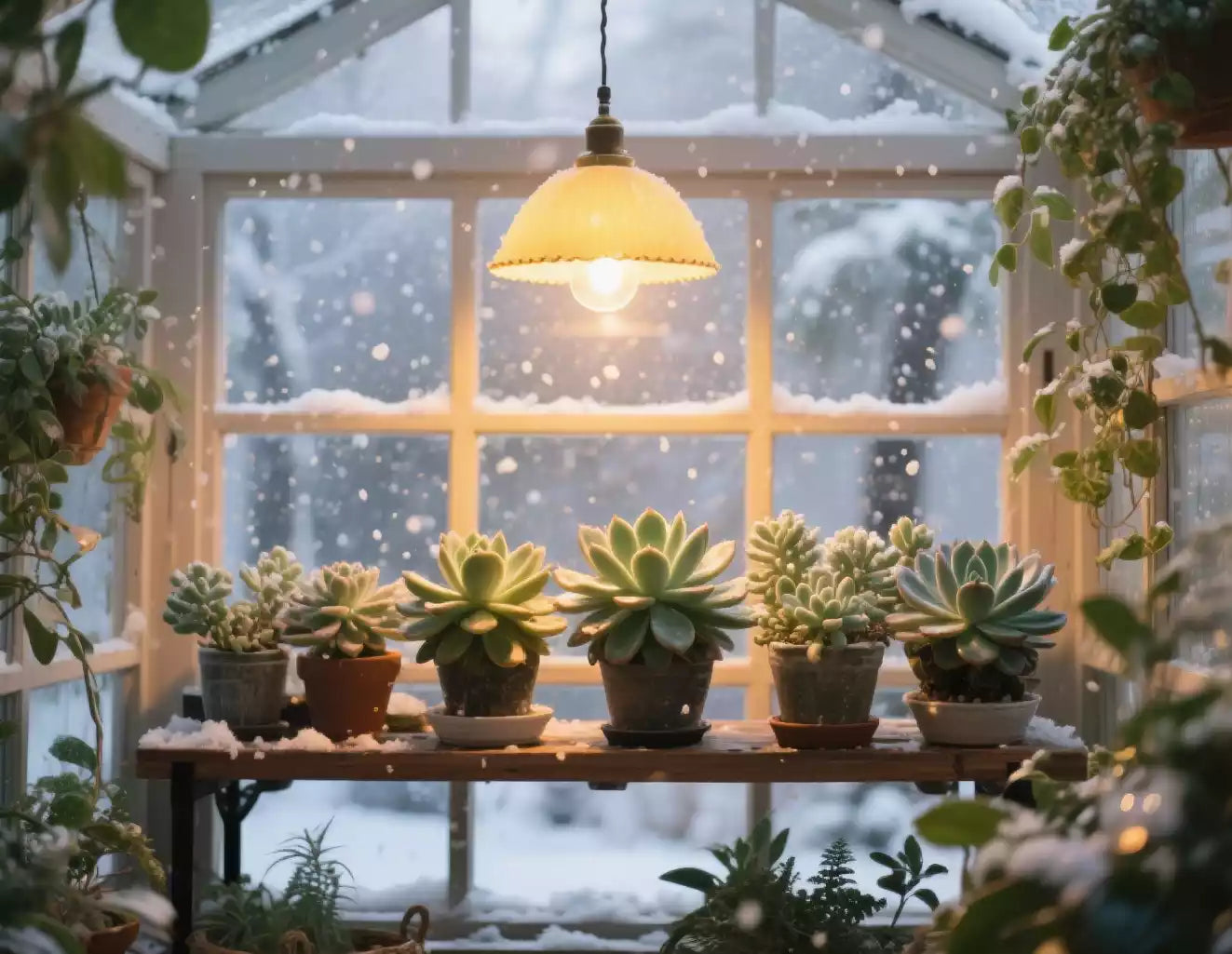
How to Water Succulents in Winter
Imagine the cold wind howling outside your window and the warm yellow light indoors; your succulents are still full and lovely, with shimmering leaves that add a touch of winter life. But don't let the wrong kind of watering "ruin" them this season! Many people are torn in winter: how often to water? Watering more rotten roots, watering less dried up. Don't panic! Today, we will take you to master the golden rule of winter watering succulents so that these "desert elves" in the cold season can also have healthy growth!
Why is winter watering crucial for succulents?
The cold temperatures and dry air of winter can cause succulents to grow slowly or even go dormant. At this time, their need for water is drastically reduced. If they are still watered at their usual frequency, it is like pouring ice water on a cold winter day, which will not only cause frostbite to the roots but will also lead to waterlogging of the soil, which can lead to fatal problems such as rotten roots and black rot. However, please don't cut off water completely; the right amount of water can maintain their basic life activities, allowing the meat to survive the winter safely.
The Golden Rule of Watering Succulents in Winter
Watering Frequency: Less is More, Lazy Nurturing is King
When watering succulents in winter, it is essential to remember that "less is more." Generally, in an environment where the indoor temperature is maintained at 60 - 80°F (15 - 27°C):
- Dormant varieties: For winter-dormant succulents, such as Aeonium aureum and Lithops, watering once every 1-2 months is sufficient. Some varieties can even be watered once or twice throughout the winter.
- Non-dormant varieties: such as Echeveria Peach Pride and Echeveria Silk Veil, as well as other slow-growing winter succulents, require watering once every 3-4 weeks is sufficient.
Suppose the indoor temperature is below 50°F (10°C). In that case, it is recommended to reduce the frequency of watering or even suspend watering, as soil moisture evaporates more slowly in cooler temperatures, and succulents are less likely to become dehydrated.
Watering methods: Precise Irrigation to Avoid "Getting wet"
For winter watering, use a fine-spouted watering can ($3-$8 to get started) and water slowly along the rim of the pot, allowing the water to penetrate the soil and avoid watering the leaves. If water beads up on the surface of the leaves, it can easily freeze in cold temperatures. The amount of watering to see water from the bottom of the pot shall prevail. After watering, remember to promptly pour out the water in the tray to prevent the roots from soaking in the water.

Judge the soil wet and dry: three tips.
1. Finger test: Stick your finger into the soil 2-3 centimeters. If it feels dry, you can water; if there is still a sense of moisture, wait a little longer.
2. Toothpick test: Insert a toothpick deep into the soil, pull it out, and observe whether moisture is present on the toothpick. If dry, it is time to water.
3. Planter weight method: Feel the weight of the planter before and after watering. A lighter planter means it is time to replenish water.
Exceptional circumstances: the response of the heated room and the air-conditioned room
If your home has winter heating, the indoor air will become particularly dry. In this case, although the frequency of watering does not have to increase dramatically, placing succulent plants near a small tray of water and pebbles can help improve the local humidity. Be careful, though, not to let the water splash into the soil. If you place it in an air-conditioned room, avoid placing succulents directly in the air-conditioned air and adjust the watering frequency accordingly.
Creative winter succulent care tips
Warmth and decoration both
Use old sweaters and wool to knit into a lovely flower pot cover to put on the succulent "winter coat," both warm and creative. You can also place some pine cones and dried branches around the flower pots to create a winter atmosphere.
Festive Theme Arrangement
As Christmas approaches, consider adding mini Christmas tree decorations, small bells, or wrapping small, colorful lights around the succulent pots to create a unique centerpiece on the festive table.

Winter succulent watering is a common problem, and solutions
Leaf soft and wrinkled
Reason: It may be due to a water shortage caused by insufficient watering, or the temperature may be too low after watering, allowing the root system to freeze.
Solution: If there is a lack of water, replenish it in moderation. If it is frostbite, cut off the frostbitten part, move it to a warm place, suspend watering, and then replenish it in small amounts when it recovers.
Root rot
Cause: Overwatering; the soil will be wet for a long time.
Solution: Immediately take off the pot, clean off the rotted root system, disinfect it by soaking it in carbendazim solution, and then dry it out and replant it into dry soil.
Black spots on leaves
Cause: Frostbite on leaves after getting water under low temperatures.
Solution: Cut off the leaves with black spots, keep the plant dry to avoid getting wet again, and wait for new shoots to grow.

Act now to keep your succulents warm through the winter!
With these winter watering tips, your succulents can say goodbye to rotten root troubles and remain vibrant during the cold season! The One Bloom has prepared a value package for winter succulent care enthusiasts, which includes cold-resistant succulent varieties, special winter soils, and a thoughtful care guide. Order now and enjoy fast delivery service! From now on, take good care of your succulents and wait for spring to come to harvest a vibrant “succulent forest”!
Share